During the nineteenth century, black clothing was usually worn to signify a special status, i.e. mourning, religious piety, extreme poverty or a position of economic and social authority. Because many professional men adopted black suit coats after 1850, black clothing was also associated with masculinity. Though women certainly wore all-black on some occasions, these ensembles were usually worn for specific activities, such as mourning or equestrian pursuits. Black slowly began to enter the realm of fashionable dress in the late nineteenth century when it was adopted by a few daringly audacious women for day and/or evening dress. The infamous black dress worn by Virginie Gautreau in John Singer Sargent’s 1884 painting Madame X, though shockingly revealing for the 1880s, is a prescient vision of what would become one of the twentieth century’s most iconic garments, the little black dress.
Black dresses slowly gained ground through the early years of the twentieth century, earning the nickname “little” as the elaborate embellishment of late nineteenth century dress gradually dropped away. A November 23, 1906 society feature in the New York Times titled Society Women Wear Black indicates that all-black dress was fashionable but was still considered novel enough to inspire comment. During World War I, mourning dress was so widespread that black dresses were, almost necessarily, created in tune with the latest fashions. For the many women who worked outside the home during World War I, black garments were also a practical choice for everyday dress. Black also entered the fashionable lexicon via the work of Chanel, who presented a collection consisting primarily of black dresses in 1919. Others, including Poiret, Lanvin and Fortuny were also experimenting with the potential of black during this same period. By the late 1920s, the little black dress had become a wardrobe essential.
The images below feature a selection of little black dresses from the FIDM Museum collection. When looking at these images as a group, an impressive continuity is apparent. Despite slight differences in silhouette the primary characteristics of a little black dress, simplicity and an understated elegance, remain the same from decade to decade.
Silk taffeta
1927-29
Transfer from the Museum at FIT
2004.291.21
Rayon crepe
1938-42
Gift of Women Helping Women
2001.788.1
Silk taffeta
Simonetta
1957-59
Gift of Mrs. Rosekrans, Jr.
94.616.1
Silk velvet and taffeta
Yves Saint Laurent
1980-81
Museum Purchase
2003.5.20

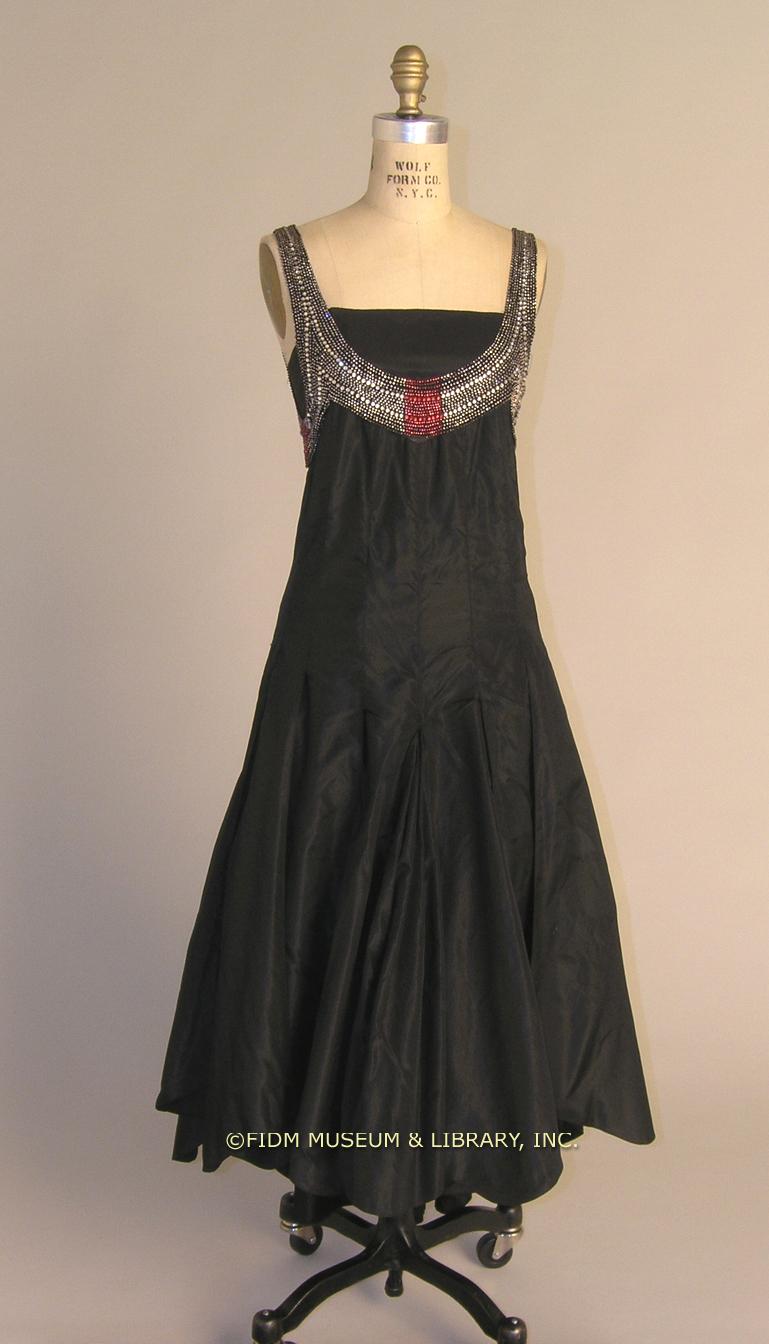
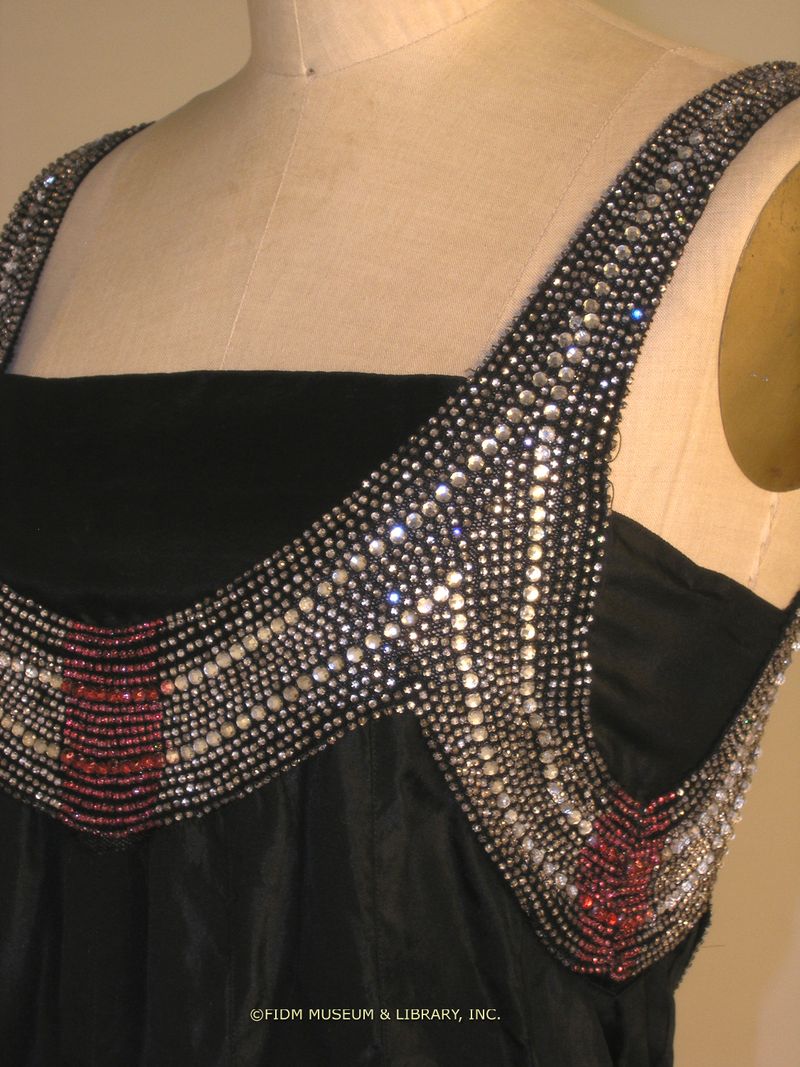
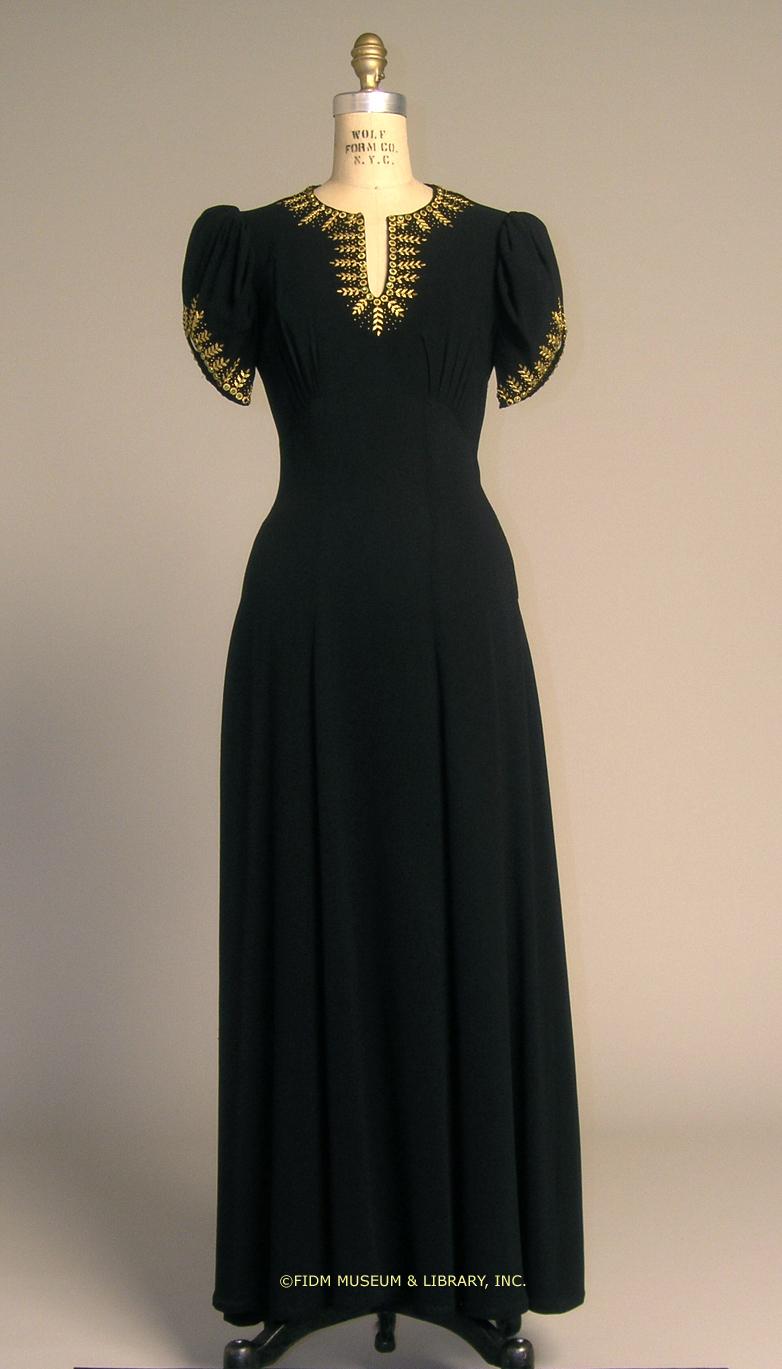
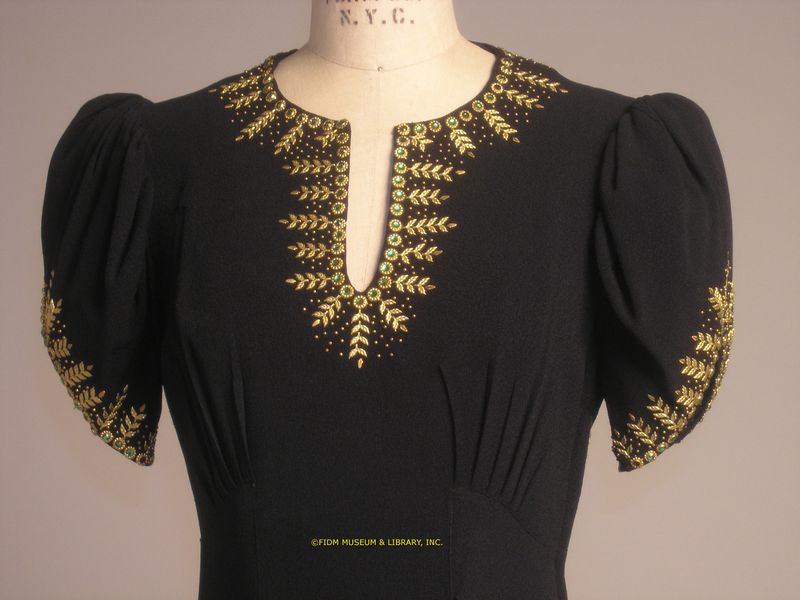
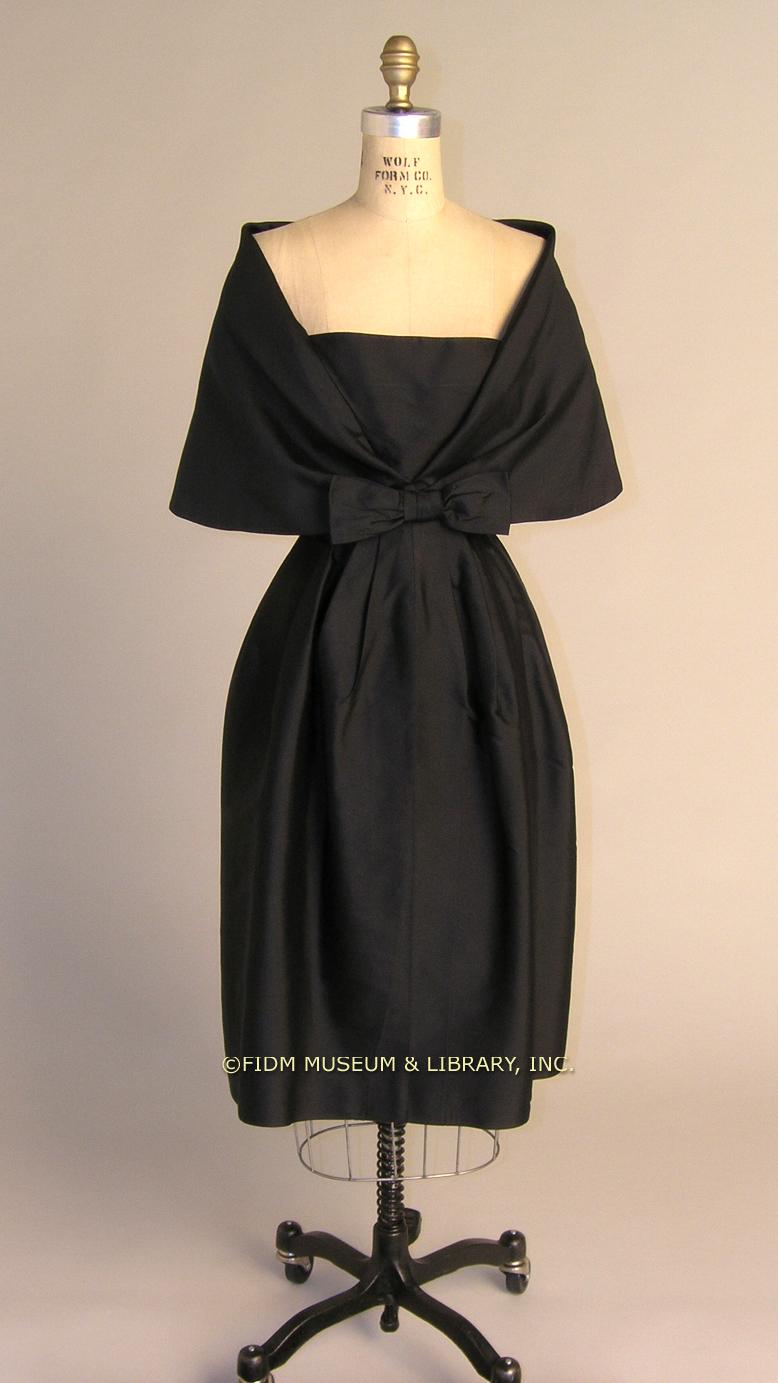
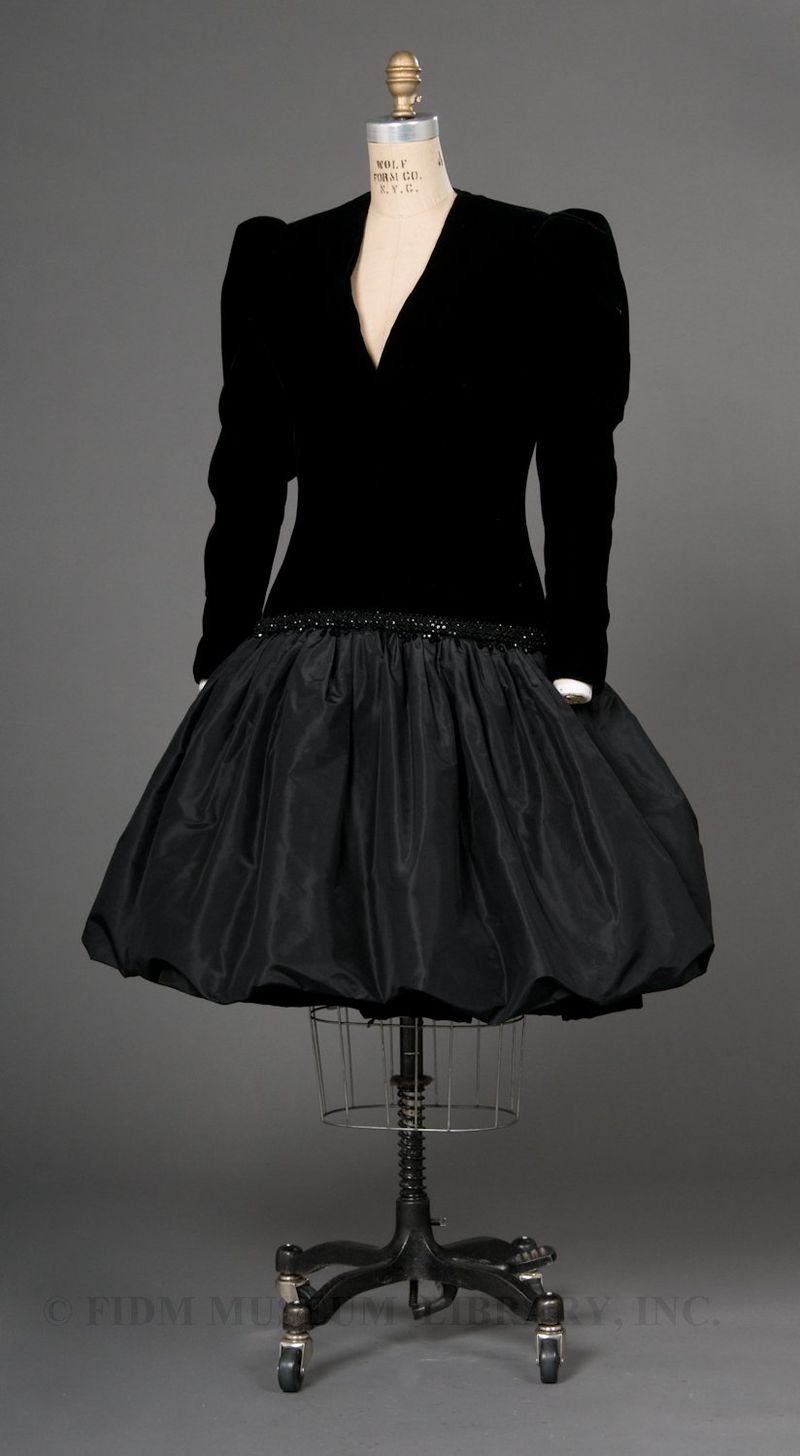

What exquisite examples of little black dresses. I also never before appreciated that during the war black would have become commonplace given the number of people in mourning.
Ingrid, given that black no longer signifies mourning, it makes me wonder how individuals mark this type of event. Do people adopt particular dress for mourning? If so, these symbols wouldn’t be widely understood as signifying mourning because they would be so personal.